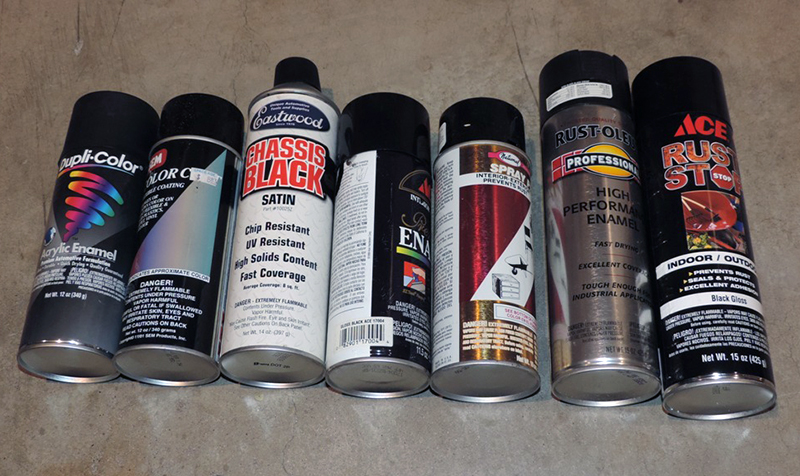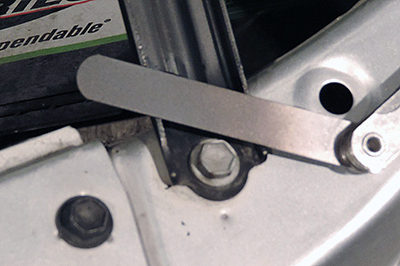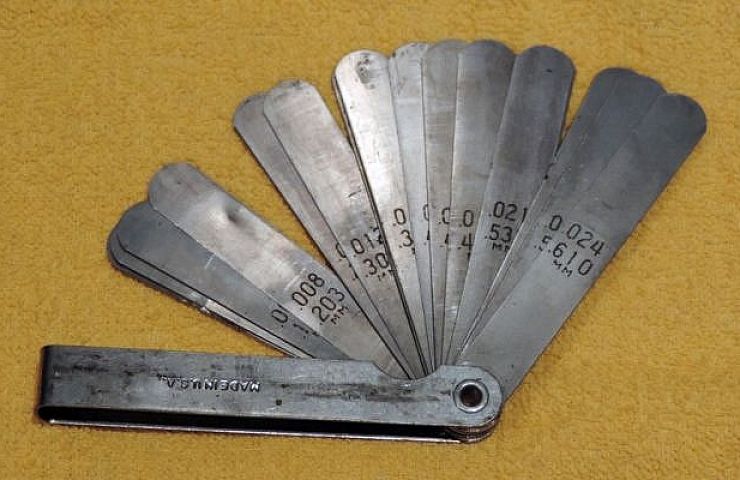A feeler gauge is an old-school tool used to measure the width of a gap. The device was once an absolute necessity for every mechanic’s toolbox. Gearheads used a feeler gauge to set the points in a distributor, properly gap the spark plugs, and measure the lashing for an engine’s valves. Because modern cars need less maintenance (for example, spark plugs last up to 100,000 miles), the lowly feeler gauge can get buried in the bottom of a tool drawer. But there’s an excellent use for a feeler gauge that you might not have considered: to match paint.
At some point, you might find yourself wanting to touch up a car part with a can of spray paint. But which paint do you use if you are trying to match the factory scheme? The feeler gauge trick can be used with any color, but the many shades of black cause the most confusion during restoration. The row of black spray paint cans in your garage might include gloss, semi-gloss, satin, flat, radiator, and chassis black. And within the gloss black category, there are various sheens.

Black paint spray paint comes in a wide variety of styles. Which one do you use to match an existing paint?
Well, it’s time to grab that old trusty metal feeler gauge.

To find the best match, hold up the different paints tested on the feeler gauge.
Slide out one of the gauge’s metal fingers, and give it a spray. Continue with all the cans that might make a good match with the target surface. It’s important to remember which paint can be used on which test piece. Better yet, take notes.
After the paint dries, hold up the gauge to the piece of equipment that you’re trying to match. This makes it super easy to choose the closest match.
We recommend setting aside one set of feeler gauges for this DIY technique. If necessary, you could use paint thinner to remove the test paints—and start over the next time you need to find a perfect color match.
If you don’t have a feeler gauge, check out the selection on eBay Motors.





